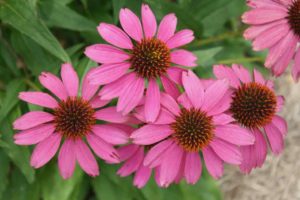
by Lydia Holley March 21, 2022
There are numerous varieties of penstemons. Some bloom earlier than others, and some have colorful foliage. They flower in a variety of colors. With hundreds of species, there are dozens of penstemons native to Texas.
Penstemon, also known as beardtongue, or foxglove beardtongue, is considered easy to care for. It is drought tolerant and takes full to part sun. It needs to have soil that drains well even though it does not mind if it is ever fertilized and will grow well in lean soil. Over time, it will naturalize a small area of the garden. Although it is not aggressive, if you do not want them to spread, simply snip off the bloom stems before it sets seed.
If you add penstemon to your garden, be prepared to see hummingbirds and butterflies flocking to the blooms which form on tall stems rising from a rosette of foliage. For those with wildlife issues, penstemons are usually considered deer and rabbit resistant.
In my garden, I have two of the most popular penstemons; ‘Elfin Pink’ and ‘Husker’s Red.’ My ‘Elfin Pink’ penstemons have naturalized along the front of the border’s edge. As the name indicates, it blooms pink. ‘Husker’s Red’ has foliage which starts out dark in spring, greening up as summer comes. Its blooms are white.
There are numerous echinaceas which bloom in various colors, but purple coneflower (Echinacea purpurea) is the most popular. This particular coneflower is native to portions of the eastern United States, extending to parts of Texas. It is named for the dome-shaped center which butterflies land upon.
Purple coneflowers are perennial and will seed itself throughout the garden. Although mine had a case of aster yellows several years ago which required removal, most of the time purple coneflowers are disease free. They are considered easy to grow.
When purple coneflowers are in bloom, it is rare to see the flowers without a butterfly or two on top. They can bloom all summer and into autumn. They make a good cut or dried flower if you want to bring them indoors. Or, the seed heads can be left all winter for the birds.
For more information, call 903-675-6130, email hendersonCMGA@gmail.com.
Follow us on Facebook: https://www.facebook.com/HCmastergardener.
